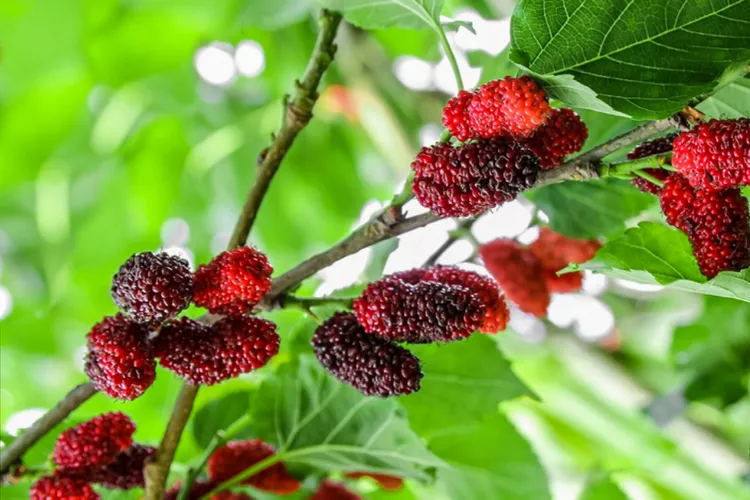The mulberry tree, known scientifically as Morus spp., presents itself as a charming medium-sized deciduous tree, boasting small, delectable berries reminiscent of blackberries. Both the red mulberry (Morus rubra) and the white mulberry (Morus alba) varieties grace landscapes across North America, adorning themselves with dark green leaves adorned with serrated edges. These trees thrive in environments with rich, well-drained, and moist soil, basking in the glow of full to partial sunlight. They particularly relish temperatures between 68 and 86 degrees Fahrenheit during the growing season, though most can endure frigid lows of minus 25 degrees. While their fruit makes a delightful snack, caution is advised around the leaves and unripe fruit, which contain a mildly toxic latex harmful to humans.
Mulberry Tree Essentials
Common Name: Mulberry tree, red mulberry, white mulberry
Botanical Name: Morus spp.
Family: Moracae
Plant Type: Tree
Mature Size: 30–60 ft. tall, 20–40 ft. wide
Sun Exposure: Full, Partial
Soil Type: Moist but Well-drained
Soil pH: Acidic, Neutral
Bloom Time: Spring
Flower Color: Yellow, Green
Hardiness Zones: 4–8 (USDA)
Native Area: North America, Asia
Toxicity: Toxic to humans
Mulberry Tree Care Tips
Light
Mulberry trees flourish in both full sun and partial shade, with increased sunlight often translating to greater fruit production.
Soil
These trees exhibit adaptability, thriving in a range of soil types from clay to loam to sandy, provided proper drainage is maintained. pH levels from neutral to mildly acidic are suitable for their growth.
Water
During the initial year post-planting, ensure deep watering weekly to foster robust root development, aiming for 2 to 3 gallons per week. Once established, mulberry trees exhibit fair drought tolerance, although extended dry spells may hamper fruiting or prompt premature dropping of unripe berries.
Temperature and Humidity
Mulberry trees, largely cold-hardy, withstand temperatures plummeting to minus 25 degrees Fahrenheit during dormancy. Optimal fruit yield occurs in regions where growing season temperatures hover between 68 and 86 degrees Fahrenheit.
Fertilizer
While mulberry trees often thrive sans fertilization, an annual application, preferably in late winter, can bolster their health. Employ a balanced 10-10-10 fertilizer, administering 1 pound per inch of trunk diameter.
Types of Mulberry Trees
- Morus alba (White Mulberry): Common in North America, distinguished by blackberry-shaped fruit maturing from white to purplish-red. Ornamental and sterile cultivars like ‘Kingan’ and ‘Chapparal’ cater to landscape aesthetics.
- Morus rubra (Red Mulberry): Indigenous to North America, featuring rough, elongated leaves and red or dark purple fruit.
- Morus nigra (Black Mulberry): Originating from Asia, boasts large, dark purple berries.
- Morus australis (Korean Mulberry): A smaller species with light green foliage and fruit ranging from white to deep red and purple.
- Morus celtidifolia (Texas Mulberry): Native to the Southwest, this shrub-like variant entices wildlife with its red, purple, or black fruits.
Pruning and Propagation
While routine pruning is unnecessary, eliminate damaged or crossing branches in late fall or winter to fortify tree health. Mulberry trees are easily propagated from semi-hardwood branch cuttings in spring or early summer.
Harvesting and Other Considerations
Berries ripen between June and August, with handpicking or shaking onto a tarp viable collection methods. To minimize mess, opt for sterile cultivars or position fruiting trees away from pavements and vehicles. Vigilant seedling removal curtails invasive spread, ensuring a tidy landscape.
Mulberry trees, with their resilience and versatility, offer a delightful addition to any landscape, provided their quirks are managed with care and consideration.




